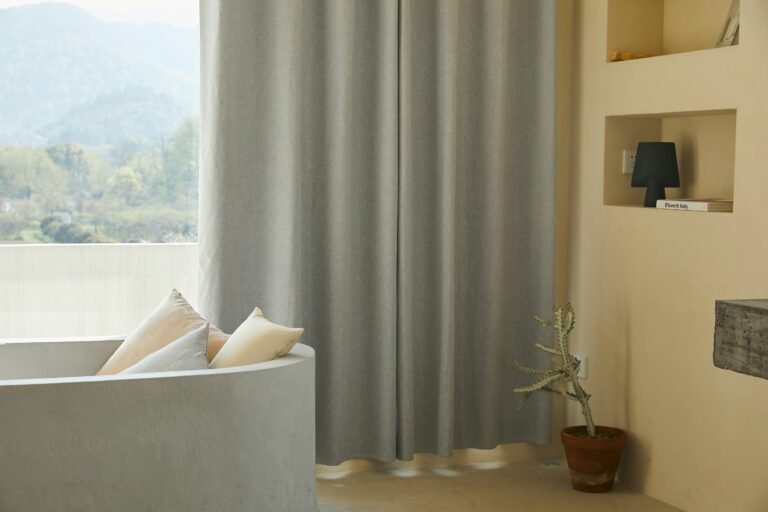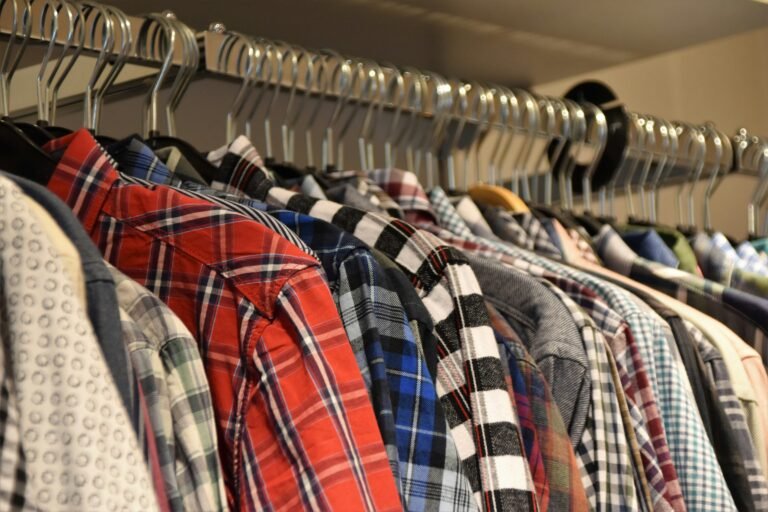Discover how thermal curtains with insulating liners can transform your living space by improving energy efficiency and enhancing comfort.
In today’s world, where energy efficiency and comfort are paramount, thermal curtains with insulating liners offer a practical solution. By investing in these specialized window treatments, you can significantly reduce energy costs and maintain a comfortable indoor environment year-round.
Understanding the benefits and features of thermal curtains is crucial for homeowners looking to optimize their home energy efficiency. These curtains not only help in reducing heating and cooling costs but also contribute to a more sustainable living environment.
This article will guide you through the essentials of thermal curtains with insulating liners. We’ll explore their benefits, compare different types, provide guidance on selection and installation, and offer tips on care and maintenance. Let’s delve into the world of thermal curtains and discover how they can enhance your home’s energy efficiency and comfort.
Table of Contents
Understanding Thermal Curtains and Their Importance
Thermal curtains are specially designed window treatments that incorporate insulating liners to enhance a home’s energy efficiency. These curtains are crafted to minimize heat transfer, providing an additional layer of insulation to your windows.
- Thermal curtains help retain heat during winter, reducing heating costs.
- They block out sunlight in summer, keeping interiors cool and reducing air conditioning expenses.
- Insulating liners also contribute to noise reduction and enhance privacy.
Key Features and Capabilities of Thermal Curtains
When selecting thermal curtains, it’s essential to consider their key features and capabilities to ensure they meet your specific needs.
- Multiple layers: Thermal curtains often feature multiple layers, including a decorative front layer and an insulating liner.
- Blackout capabilities: Some thermal curtains also offer blackout features, which are ideal for bedrooms or media rooms.
- Moisture resistance: Certain thermal curtains come with moisture-resistant properties, making them suitable for humid environments.
Comparing Different Types of Thermal Curtains
Thermal curtains come in various types, each offering unique benefits. Understanding these options can help you make an informed decision.
| Feature/Type | Benefits | Best For | Considerations |
|---|---|---|---|
| Blackout Thermal Curtains | Blocks light and insulates | Bedrooms, media rooms | May require additional support for hanging |
| Soundproof Thermal Curtains | Reduces noise and insulates | Urban areas, busy streets | Heavier than regular curtains |
| Eco-friendly Thermal Curtains | Made with sustainable materials | Environmentally conscious homes | May be more expensive |
Selecting the Right Thermal Curtains for Your Home
Choosing the right thermal curtains involves considering several factors to ensure they meet your specific needs and preferences.
- Measure your windows accurately to ensure a proper fit.
- Decide on the primary purpose: insulation, blackout, or soundproofing.
- Consider the style and color that will complement your interior decor.
Installing and Using Thermal Curtains Effectively
Proper installation is key to maximizing the benefits of thermal curtains. Follow these steps to ensure effective use.
- Install a sturdy curtain rod to support the weight of the curtains.
- Ensure the curtains cover the entire window to prevent heat loss or gain.
- Regularly adjust the curtains according to the season for optimal energy savings.
Caring for and Maintaining Your Thermal Curtains
Maintaining your thermal curtains ensures they remain effective and last longer. Here are some care tips.
- Regularly vacuum the curtains to remove dust and allergens.
- Follow the manufacturer’s instructions for washing or dry cleaning.
- Avoid direct sunlight exposure to prevent fading of colors.
Expert Tips and Recommendations
- Consider layering your thermal curtains with blinds for additional insulation.
- Choose curtains with a high R-value for better thermal performance.
- Opt for neutral colors to blend with various decor styles over time.
- Take advantage of sales and discounts during off-season purchases.
Common Questions About Thermal Curtains with Insulating Liners: Enhance Energy Efficiency and Comfort
Find answers to frequently asked questions about thermal curtains with insulating liners.
- Q: How do thermal curtains reduce energy costs?
A: They provide an extra layer of insulation, reducing heat loss in winter and heat gain in summer, thus lowering heating and cooling expenses. - Q: Can thermal curtains block out noise?
A: Yes, soundproof thermal curtains can help reduce noise from outside, making them ideal for busy urban environments. - Q: Are thermal curtains easy to install?
A: Installation is straightforward but requires a sturdy curtain rod due to their heavier weight. - Q: Do thermal curtains require special maintenance?
A: Regular vacuuming and occasional washing according to care instructions are recommended to maintain their effectiveness. - Q: Are there eco-friendly options available?
A: Yes, many manufacturers offer thermal curtains made from sustainable materials that provide both environmental benefits and energy savings.
Conclusion
Thermal curtains with insulating liners are a smart investment for anyone looking to enhance their home’s energy efficiency and comfort. By choosing the right type and maintaining them properly, you can enjoy lower energy bills and a more comfortable living environment.
Incorporating thermal curtains into your home’s design not only offers practical benefits but also adds aesthetic value. We highly recommend exploring these options to see how they can improve your home.
Ready to enhance your home’s energy efficiency and comfort? Check out this essential thermal insulated curtains to start your journey to a more comfortable and cost-effective living space: [Affiliate link placeholder]
As an Amazon Associate I earn from qualifying purchases.
Check out this related post: Blackout Magnetic Curtains: Privacy and Energy Efficiency
Explore this topic: Insulating Liners
Last updated on August 7, 2025








